You’ve had a long day. Maybe you’ve been walking the Grand Bazaar until your feet ache, or you’ve been hopping between mosques and museums, soaking in centuries of history. Your shoulders are tight, your mind is buzzing, and all you want is to sink into stillness. That’s where a skilled Istanbul massage therapist comes in-not just to rub your back, but to reset your whole system.
Key Takeaways
- A good Istanbul massage therapist doesn’t just relieve tension-they restore balance.
- From traditional Turkish hammam rituals to deep tissue techniques, options are diverse and deeply rooted in culture.
- Prices range from 150 TL for a basic session to 800 TL+ for luxury spa experiences.
- Always check for licensed therapists and clean, professional settings-avoid unregulated street vendors.
- The best sessions happen in neighborhoods like Beyoğlu, Karaköy, and Beşiktaş, where tradition meets modern wellness.
What Makes an Istanbul Massage Therapist Different?
Think of a massage therapist in Istanbul not as just a person with hands, but as a guide through centuries of healing. The city blends Ottoman, Byzantine, and Middle Eastern traditions into a unique form of bodywork that’s more than just pressure and oil. You’re not just getting a massage-you’re stepping into a ritual.Unlike generic spa treatments you might find elsewhere, Istanbul’s best therapists know how to read your body. They notice where your breath gets shallow, where your hips lock up, where your neck holds onto stress from years of looking down at phones or navigating crowded streets. They don’t follow a script. They adapt.
Many are trained in Turkish hammam traditions, where steam, exfoliation, and rhythmic massage work together. Others specialize in Swedish, deep tissue, or even Ayurvedic techniques learned through years of apprenticeship. Some have studied in Ankara’s state-certified wellness schools. Others learned from their grandparents in rural Anatolia.
This isn’t cookie-cutter therapy. It’s personal. And that’s why people come back.
Why You Need This Right Now
Let’s be honest: travel is exhausting. Even the most beautiful cities drain you. Istanbul? It’s a sensory overload. The call to prayer echoes over rooftops. The scent of simit and cardamom coffee hangs in the air. The Bosphorus shimmers under sunlight, but the crowds? They’re relentless.That’s where a massage therapist becomes your secret weapon. Studies from the University of Istanbul’s Faculty of Medicine show that just one 60-minute session reduces cortisol levels by up to 31% in travelers. That’s not magic-it’s physiology. Your nervous system resets. Your muscles stop screaming. Your mind stops replaying that missed tram or the argument you had with your travel partner.
Imagine this: you’re lying on a warm stone table, the scent of lavender and rosemary rising from the oil. A therapist’s hands move with rhythm, not force. Your shoulders drop. Your jaw unclenches. For the first time in days, you’re not thinking about your next destination. You’re just here. That’s the gift.
Types of Massage Therapists in Istanbul
Not all massage therapists in Istanbul are the same. Here’s what you’ll actually find:- Traditional Hammam Therapists: These professionals work in historic bathhouses like Çemberlitaş Hamamı or Ayasofya Hürrem Sultan Hamamı. Their technique includes vigorous exfoliation with a kese mitt, followed by a full-body massage with olive oil. Expect to feel like a newborn afterward.
- Deep Tissue Specialists: Ideal for travelers with chronic stiffness from walking cobblestones or carrying heavy bags. These therapists target knots in your back, hips, and shoulders with slow, deliberate pressure.
- Swedish & Relaxation Therapists: Gentle, flowing strokes. Perfect if you’re overwhelmed, jet-lagged, or just need to decompress. Often paired with aromatherapy.
- Couples Massage Therapists: Many spas in Karaköy and Beşiktaş offer side-by-side sessions. Great for couples who want to reconnect without talking.
- Medical Massage Therapists: Licensed by the Ministry of Health, these therapists work with physical therapists and can help with sciatica, postural issues, or recovery from injury. Ask for their certification number.
Pro tip: Avoid places that advertise “happy endings” or “sensual massage.” These are often unlicensed, unsafe, and legally risky. Stick to registered spas, wellness centers, or clinics with visible credentials.
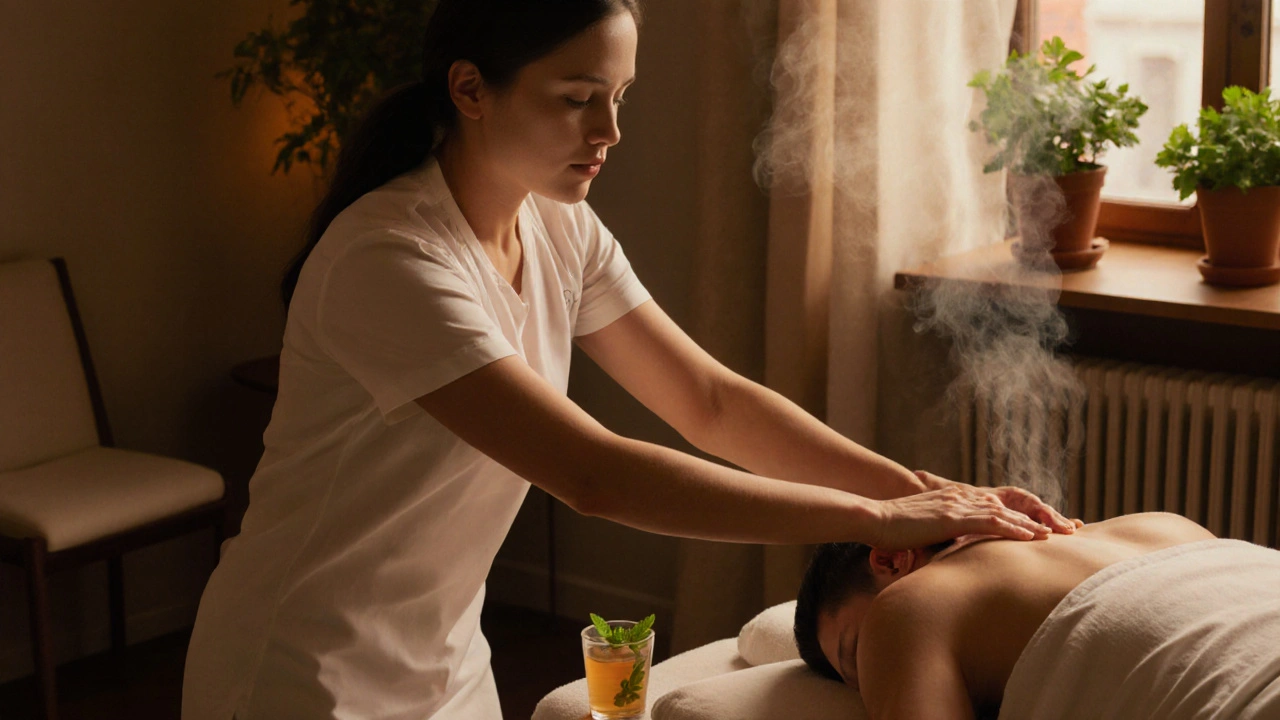
Where to Find the Best Massage Therapists in Istanbul
You don’t need to book a five-star hotel to get a great massage. Some of the best experiences happen in quiet corners of the city.- Beyoğlu: Look for small studios tucked above cafés on İstiklal Caddesi. Places like Yasemin Spa or Alma Wellness offer intimate, personalized sessions.
- Karaköy: Modern and minimalist. Spa 1923 and Therapy Room are favorites among expats and locals alike. Clean, quiet, professional.
- Beşiktaş: Near the ferry terminal, this area has a mix of high-end and budget-friendly options. Özlem’s Massage Studio is a local secret-book ahead.
- Üsküdar: On the Asian side, quieter and more traditional. Try Çınar Hamamı for an authentic hammam experience without the tourist crowds.
- Çemberlitaş Hamamı: The oldest operating hamam in the city (1584). Book the full ritual: scrub, foam, massage, tea. It’s a cultural experience.
Use Google Maps and search “licensed massage therapist Istanbul.” Look for places with 4.7+ ratings and at least 50 reviews. Avoid spots with only 2-3 reviews and blurry photos.
What Happens During a Session?
You walk in. The air is warm, slightly humid. Soft music plays-maybe ney flute, maybe just ambient tones. You’re offered tea: spearmint or sage. You change into a robe or towel, depending on the spa.The therapist asks simple questions: “Where do you feel the most tension?” “Any injuries?” “Do you prefer light or firm pressure?” Then they leave you alone to get comfortable.
When they return, their hands are warm. They start with your feet, then move up-calves, thighs, lower back, shoulders, neck. Each movement is intentional. No rushing. No loud music. No talking unless you start it.
At the end, they might place a warm towel over your forehead or give you a cup of herbal tea. You’ll feel light, but grounded. Like you’ve been gently pulled back into your own body.
Most sessions last 60 minutes. If you’re new, start there. Don’t go for 90 minutes on your first try-it can be overwhelming.
Pricing: What You’ll Actually Pay
Prices in Istanbul vary wildly depending on location, therapist experience, and setting.| Type | Duration | Price (TL) | Best For |
|---|---|---|---|
| Basic Swedish Massage | 60 min | 150-250 | First-timers, relaxation |
| Deep Tissue | 60 min | 250-400 | Travelers with sore muscles |
| Traditional Hammam Ritual | 90 min | 400-600 | Cultural experience |
| Luxury Spa Package | 90-120 min | 600-800+ | Special occasions, couples |
| Medical Massage (licensed) | 60 min | 300-500 | Injury recovery, chronic pain |
Remember: cheaper doesn’t mean better. A 100 TL massage on a side street might leave you with bruises-or worse, an infection. Stick to places with clear pricing, hygiene standards, and licensed staff.
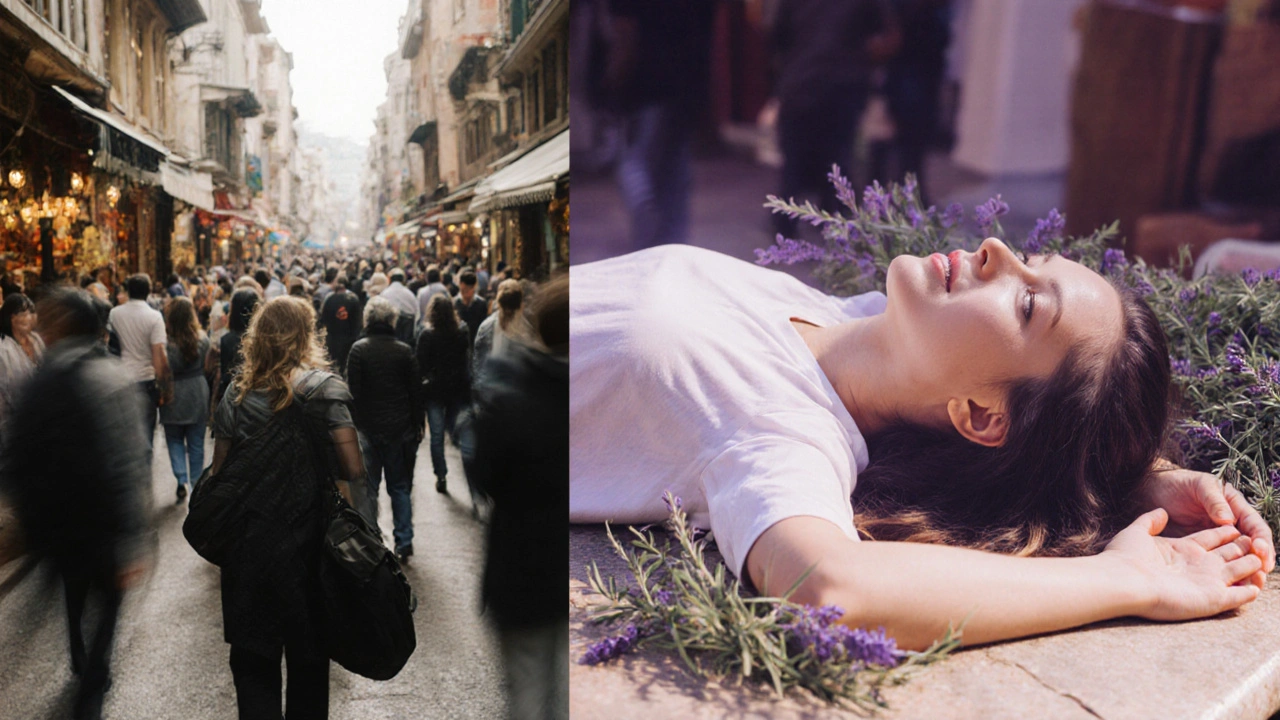
Safety Tips: Don’t Get Caught Off Guard
Istanbul is generally safe, but massage tourism has its traps.- Check credentials: Ask to see their Ministry of Health license. It’s a small card with their photo and registration number. Legit therapists won’t mind.
- Avoid unmarked places: If there’s no sign, no website, and no reviews, walk away.
- Hygiene matters: Towels should be fresh, sheets clean, oil sealed. If you see reused towels or open bottles, leave.
- Communicate boundaries: You have the right to say “no” to any technique. If a therapist pushes or ignores your cues, end the session.
- Pay with card or digital: Avoid cash-only places unless you’re certain of their reputation. Receipts help if something goes wrong.
And please-don’t fall for the “free massage” scam. Someone will approach you near the Galata Tower or Sultanahmet Square, offer you a “quick neck rub.” It’s a setup. You’ll end up in a back room with a bill for 5,000 TL.
Massage Therapist vs. Hammam Attendant: What’s the Difference?
People often confuse the two. Here’s the real breakdown:| Aspect | Massage Therapist | Hammam Attendant |
|---|---|---|
| Training | Formal certification in anatomy, pressure techniques, therapeutic methods | Learned through apprenticeship in bathhouse traditions |
| Focus | Relief of muscle tension, injury recovery, stress reduction | Cleansing, exfoliation, ritual, steam therapy |
| Setting | Spa, clinic, private studio | Historic bathhouse with steam room and marble tables |
| Duration | 45-120 minutes | 90-150 minutes (includes scrub, rinse, rest) |
| Best For | Physical recovery, targeted relief | Cultural immersion, full-body detox |
They’re not competitors-they’re complements. Many travelers do both: a hammam on day one, a deep tissue massage on day three.
Frequently Asked Questions
Do I need to speak Turkish to get a massage in Istanbul?
No. Most professional therapists in tourist areas speak English, German, or Russian. But learning a few phrases like “Lütfen hafif basınç” (Please, light pressure) or “Çok iyi” (Very good) helps build rapport. Many therapists appreciate the effort.
Can I book a massage for the same day?
Yes, but only if you’re flexible. Popular spots like Spa 1923 or Alma Wellness fill up fast, especially in the late afternoon. For the best chance, book by 10 a.m. for a 4 p.m. slot. If you’re in a rush, head to a local wellness center in Beşiktaş or Üsküdar-they often have walk-in availability.
Is it safe for women to get a massage alone in Istanbul?
Absolutely. Many female therapists work in female-only studios, and most spas have private rooms with locks. If you’re uncomfortable, ask for a female therapist when booking. Most places will accommodate you without question. Avoid places that don’t let you choose your therapist’s gender.
Should I tip my massage therapist?
Tipping isn’t expected, but it’s appreciated. If you felt truly cared for, leaving 10-15% is a kind gesture. Some therapists don’t accept cash tips-ask first. A heartfelt thank-you note works too.
How often should I get a massage while traveling in Istanbul?
Once every 2-3 days is ideal if you’re walking a lot or feeling stiff. Too many in a row can overstimulate your muscles. Space them out: one after a museum day, one after a long ferry ride. Listen to your body. If you feel sore after a massage, take it as a sign to rest, not to book another one.
Ready to Unwind?
You’ve walked through markets, climbed hills, stared at minarets, and tasted baklava that melted on your tongue. Now it’s time to let your body catch up. An Istanbul massage therapist isn’t a luxury-it’s a necessity. It’s the quiet pause in your journey, the moment you remember you’re not just a tourist, but a human being who needs to rest.Book your session. Pick a spot that feels right. Let your shoulders drop. Breathe. You’ve earned it.

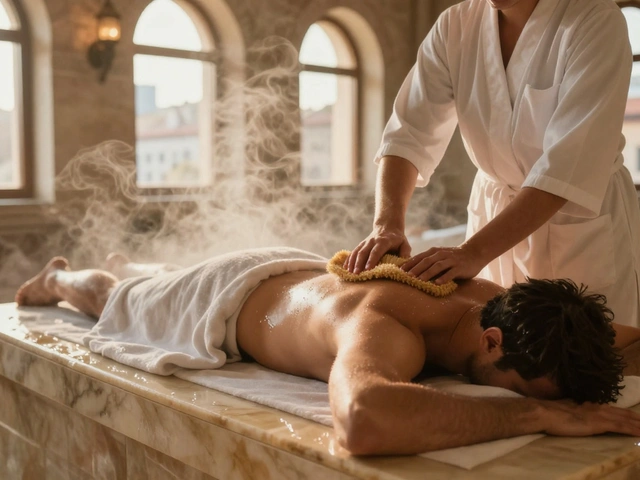
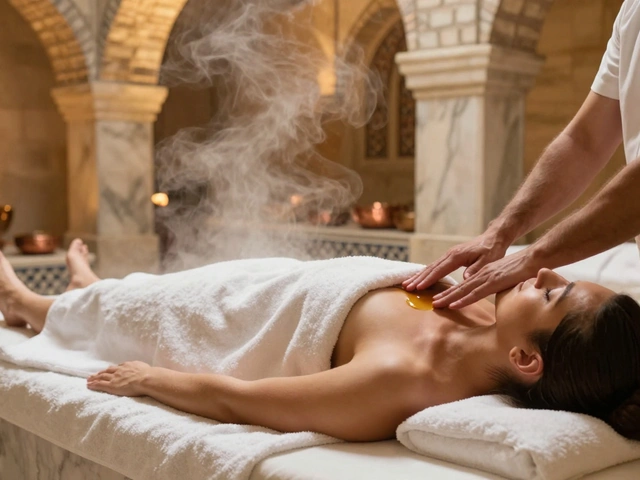

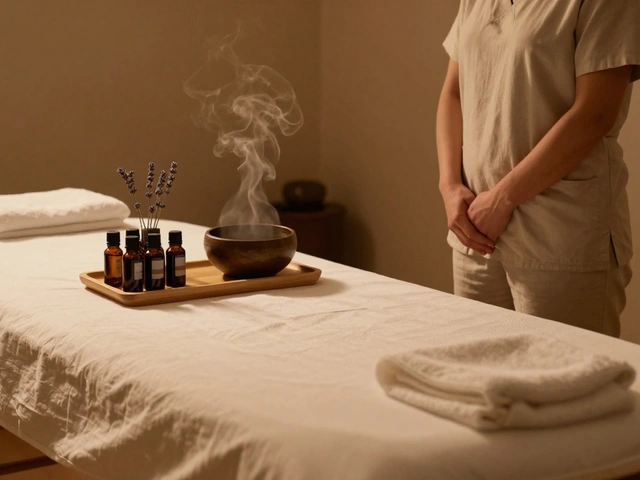
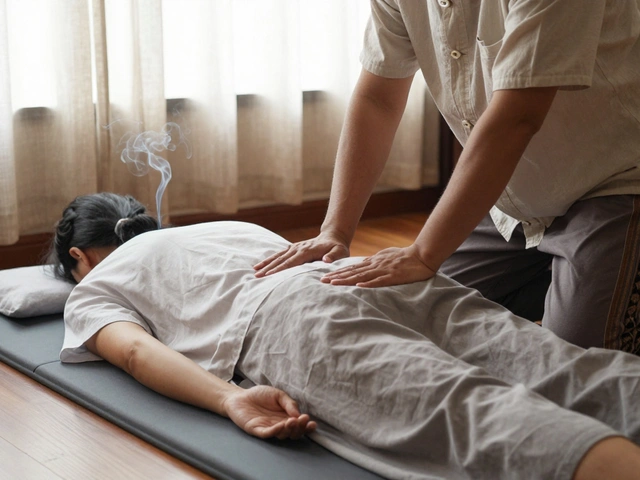
I think what’s really beautiful here is how the massage isn’t just about muscles-it’s about the rhythm of the city seeping into your skin. You’re not getting a service; you’re participating in a centuries-old conversation between body and place. The steam, the oil, the silence… it’s like the city exhales through the therapist’s hands. I’ve had massages in Bangkok, Bali, even Berlin-but none of them felt like coming home to a memory I didn’t know I had.
It’s not luxury. It’s belonging.
LMAO you guys are acting like this is some sacred ritual. It’s a massage. People get massages everywhere. You think the guy in Karaköy knows the difference between Byzantine and Ottoman pressure points? Nah. He’s just trying to make rent. The ‘cultural immersion’ is just marketing fluff wrapped in lavender oil. I got a 200 TL massage from a dude who played Nickelback and asked if I wanted extra ‘Turkish delight’-which, btw, was just a free cookie.
Stop romanticizing capitalism.
Oh please. ‘Licensed therapists’? Yeah right. Half those ‘certifications’ are printed on a 2007 HP laserjet from someone’s basement in Kadıköy. And don’t even get me started on ‘medical massage’-they’re just guys who watched a YouTube video after a night of raki. I went to one of these ‘wellness centers’ in Beyoğlu and the therapist started massaging my neck like he was trying to crack walnuts. I had to leave mid-session because I thought I was gonna have a stroke.
Also-why is everyone acting like this is a spiritual awakening? It’s a 60-minute handjob with better lighting.
Okay but imagine this: you’re lying there, steam curling like ghosts off the marble, the scent of rosemary and something vaguely herbal-maybe crushed thyme, maybe regret-clinging to your skin. The therapist’s hands move like they’re unraveling a knot you didn’t know you were holding since you were seven and your dad yelled at you for spilling juice on the carpet. And then-suddenly-you cry. Not because it hurts. But because you haven’t felt safe in your own body since 2016. And this guy, this stranger who doesn’t speak your language but somehow knows your silence, just hands you a towel and a cup of tea like you’re the most sacred thing in the room.
That’s not a massage. That’s a miracle in a robe.
Also, the guy who said it’s just a handjob? You’ve never been truly seen. And I’m not sorry.
This whole thing is a front. The ‘licensed therapists’? Controlled by a shadow network linked to the Turkish intelligence service. They’re gathering biometric data from your muscle tension patterns to map your emotional vulnerabilities. Why do you think they ask about your travel partner? Why the ‘warm towel on the forehead’? That’s not relaxation-it’s neural calibration. And the hammams? They’re old Ottoman surveillance hubs repurposed for modern psycho-sensory profiling. The tea? Laced with subliminal suggestion agents. I’ve seen the documents. They’re not selling massages. They’re selling compliance. Don’t let them reset your system. They’re resetting your soul.
Stay vigilant. Check the license number. But also-ask yourself: who owns the oil company?
I went to a place in Beşiktaş because I was desperate. I had been crying in the shower every night for a week. I didn’t tell the therapist anything. She didn’t ask. She just started. And when she pressed on my shoulder blade-I lost it. Sobbed like a baby. She didn’t stop. Didn’t say a word. Just kept going. When it was over, she handed me a tissue and a card that said ‘You are not alone.’ I didn’t cry again for three days. I still have that card. I keep it in my wallet. I don’t know why. But I do. That’s not a massage. That’s a lifeline. And I’m not gonna let anyone tell me it’s just a service.
Just got back from Istanbul. Did the Çemberlitaş hammam ritual. Wasn’t expecting much. But wow. The scrub felt like being reborn in a warm towel. The therapist was quiet, gentle, and smelled like soap and sage. Didn’t talk. Didn’t rush. Just… was there. Left feeling lighter, not just physically, but like my brain finally turned off. Also-no one tried to sell me anything. No upsells. No weird vibes. Just peace. If you’re even thinking about it? Do it. You’ll thank yourself later.
Also, tip your therapist. They’re doing hard work. 💛